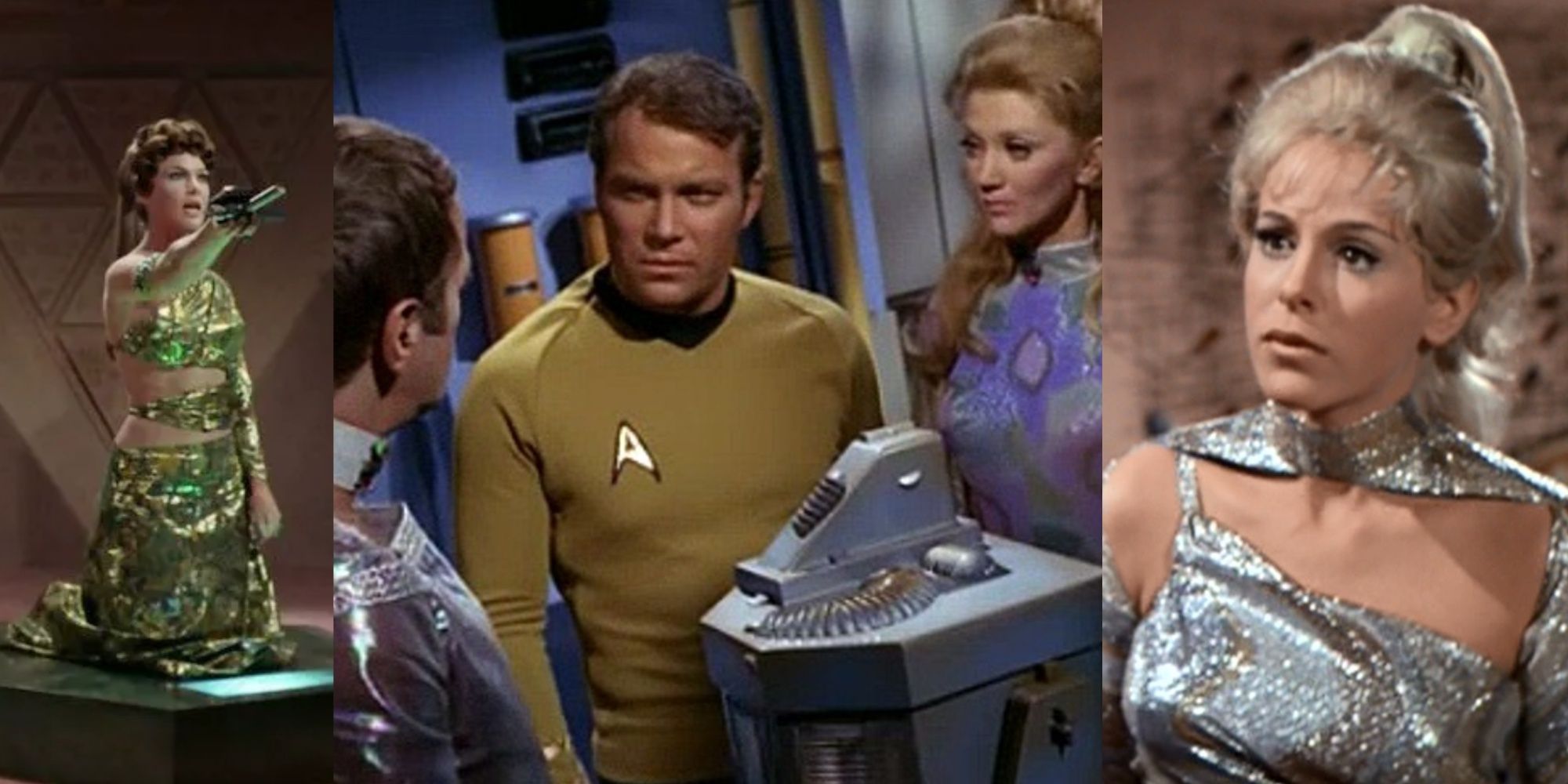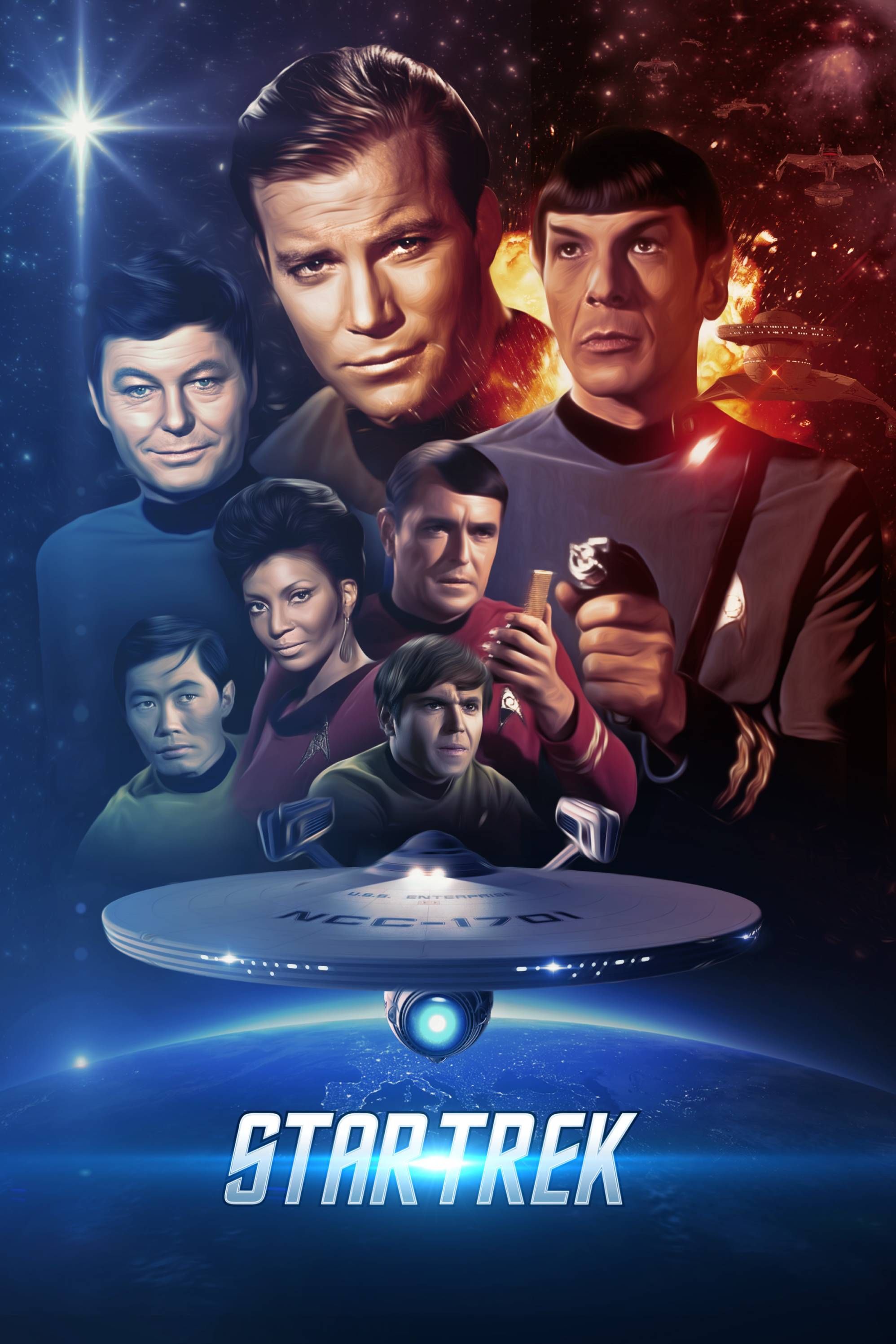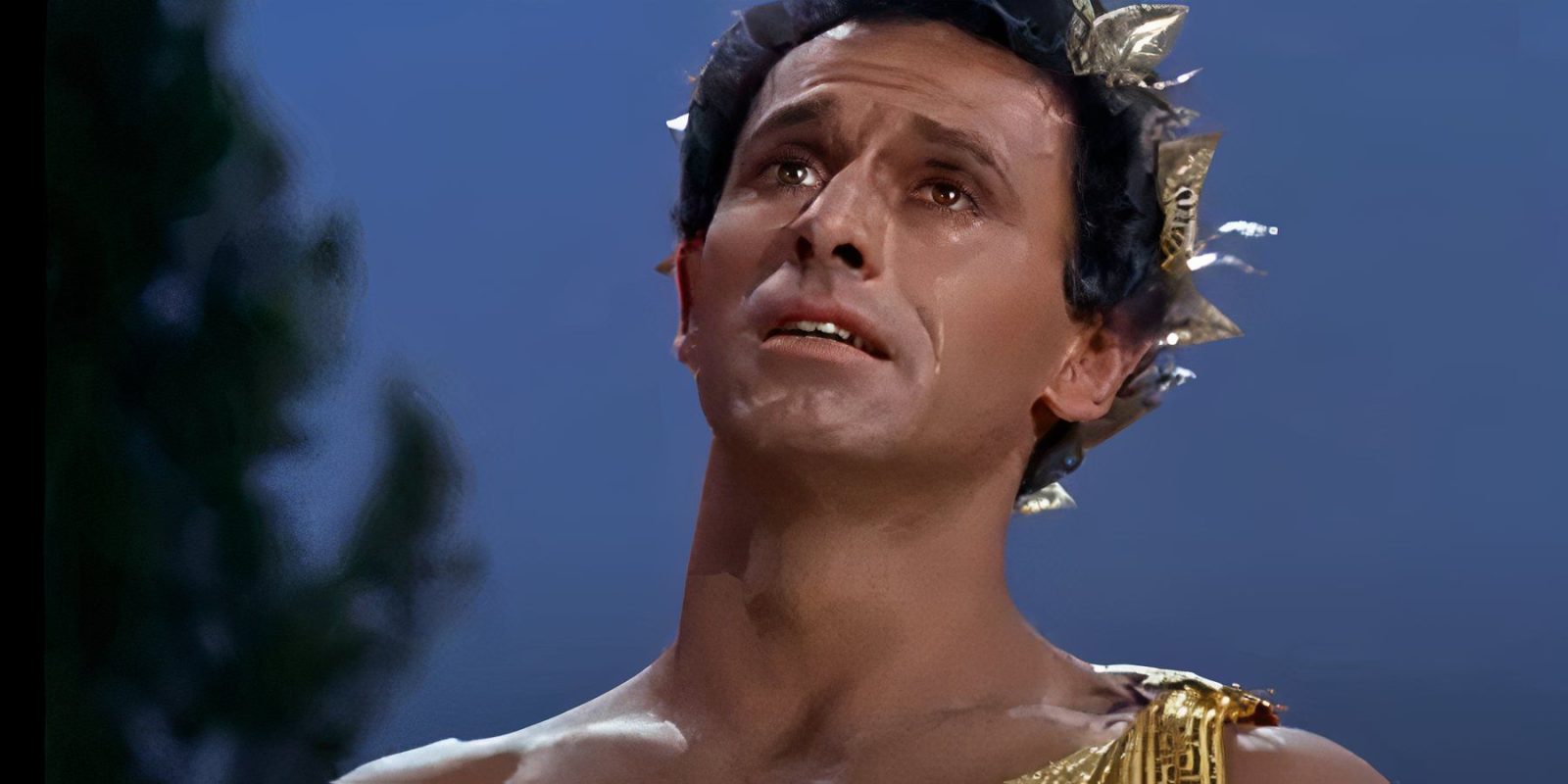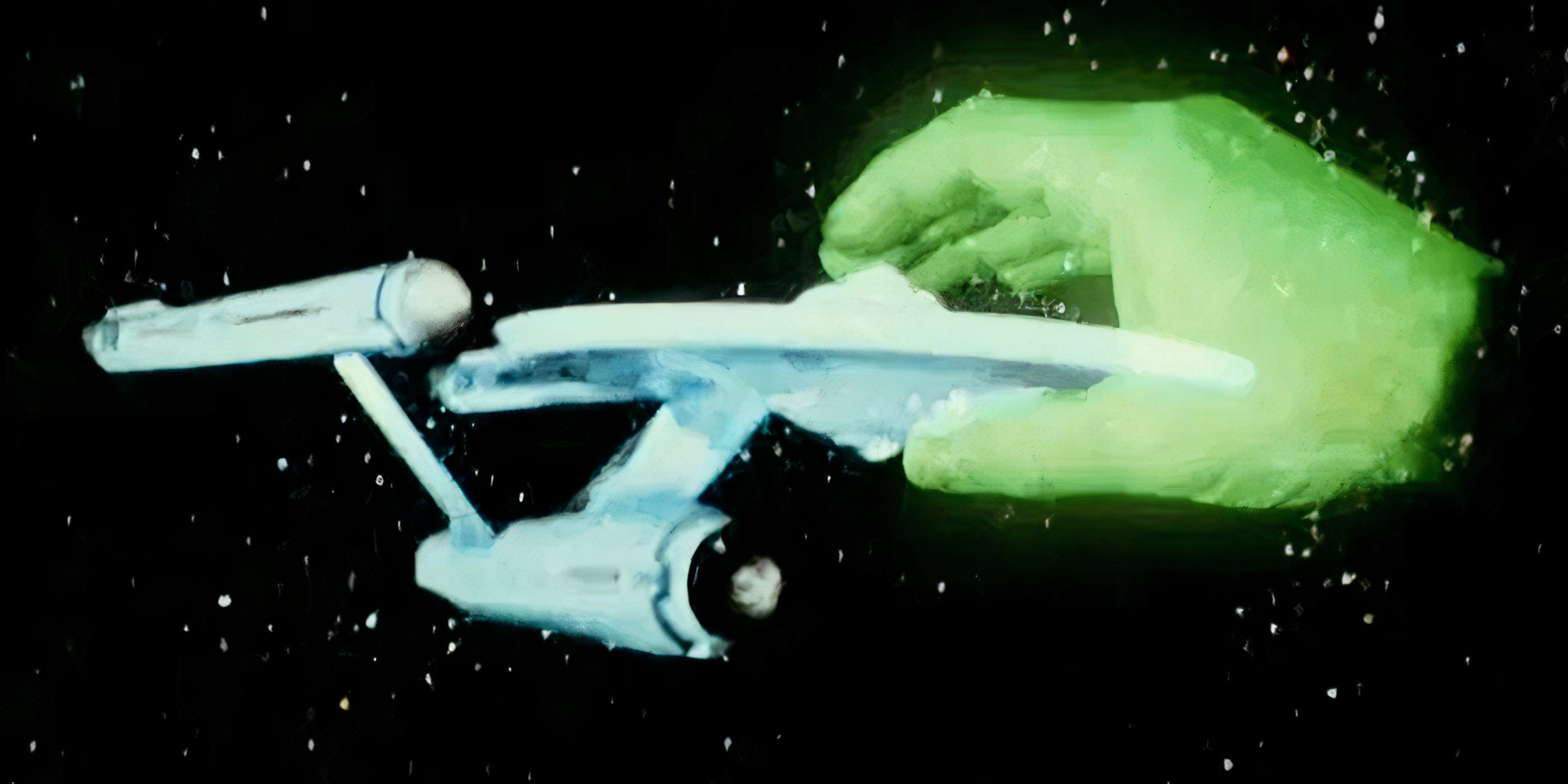Key Takeaways
-
Star Trek
delved into gods vs. aliens with Apollo, disguised as Greek god. -
TOS
episode “Who Mourns for Adonais?” views Apollo as an alien, but accepts that he was understood as a god by the Ancient Greeks. -
Star Trek: Lower Decks
introduces demigod Ensign Olly.
Since it premiered, Star Trek has taken on complex topics and posed questions that make its fans think about the world differently. Though Gene Roddenberry, Star Trek’s creator, was not a religious man, he and the other minds behind The Original Series (TOS) did see the narrative power in posing questions about spirituality and even the existence of gods or a single God.
They tackled this topic in-depth in the second season of TOS with the episode “Who Mourns for Adonais?” This episode became famous, or maybe infamous, for the scene where a giant, green, floating hand grabs the Enterprise and tries to crush it. That disembodied hand belonged to none other than Apollo, the Greek god Apollo, the god of light and purity.

Related
Star Trek: The Original Series – Open-Ended Episodes That Modern Trek Should Continue
Many Original Series episodes left lingering questions or dangling plot threads that modern Star Trek viewers would love to see picked up.
The Time Kirk Met a God
As the giant, green hand held the Enterprise in a literal death grip, a vision of a giant head, crowned with laurel leaves, appeared, and his voice echoed through the Enterprise. Calling the crew his “beloved children,” the giant head welcomed them down to his planet, their “home.”
Captain Kirk took a landing party down to the surface of the planet, which was known as Pollux IV. When he, Lieutenant Scotty, Dr. McCoy, Ensign Chekov, and Lieutenant Palamas arrived, they were greeted by a gorgeous man wearing a gold laurel crown, a draped gold garment, and gold sandals. His aesthetic was reminiscent of the ancient Greeks, as was the architecture on the planet. He introduced himself as Apollo.
Of course, the members of the landing party didn’t actually believe he was the Greek god. In fact, Dr. McCoy’s tricorder scans showed he was basically human, though he did have one extra organ in his chest that McCoy couldn’t explain. Angered by their doubts, Apollo transformed into a giant version of himself and boomed:
Welcome to Olympus, Captain Kirk!
Apollo demanded their worship and devotion, just like the Ancient Greek humans gave him. He spoke of that time period in precise detail, and his personality did correspond with the depictions of Apollo in the Greek myths. When the crew refused to worship him, he shot them with lightning bolts, a power Apollo was known to have as a son of Zeus.
Was Apollo Really a God?
Though the members of the landing party couldn’t explain Apollo’s supernatural abilities, they still didn’t believe he was actually the Greek god of antiquity. Then, Kirk posed one of the most interesting questions the Star Trek franchise has ever tackled — what if the beings humans understood as “gods” were actually aliens?
He proposed that if they accepted Apollo’s story, detailing how he and the rest of the Greek Pantheon were visitors to Earth thousands of years ago, then it was logical that the people of the time would have interpreted these alien visitors as gods. After all, they had supernatural powers the Greeks had never seen, and they had no concept of life beyond Earth. How else could they interpret alien visitors, if not as gods?
The landing party concluded that, though Apollo obviously wasn’t a god, he was indeed the being known to the Ancient Greeks as the god of light and purity, Apollo. After some investigation, they discovered that Apollo was able to channel energy from any energy source through his body to create the “lightning bolts” he shot out of his fingers.
Star Trek took on this concept of aliens being worshipped as gods several more times throughout the franchise. The TOS cast addressed this topic again in Star Trek V: The Final Frontier when they discovered an alien presenting itself as the Judeo-Christian version of God. In the Next Generation episode “Who Watches the Watchers,” Captain Picard visited a pre-warp society that discovered a Starfleet observation outpost on their planet and started worshiping Starfleet officers as gods.
Of course, the deepest and most nuanced exploration of “god-aliens” happened in Deep Space Nine with the “wormhole aliens/The Prophets.” In the very first episode of DS9, Commander Benjamin Sisko discovered that the Bajoran “gods,” The Prophets, were actually non-corporeal aliens living inside a stable wormhole in space outside of Bajor’s orbit.
Spoilers for Star Trek: Lower Decks season 5, episode 6 ahead.
Star Trek: Lower Decks’ Demigod
The latest episode of Star Trek: Lower Decks, “Of Gods and Angles,” introduces a new character named Ensign Olly. The first thing people notice when they see her is her laurel crown, identical to the one worn by the being called Apollo, whom Captain Kirk met over a century before. Turns out, she’s related to Apollo. Zeus is her grandfather, and like her family members, Ensign Olly can channel electricity from any source around her through her body and direct it at a target.
Unfortunately, Ensign Olly doesn’t have as much control over her electrical powers as Apollo did. She keeps channeling energy from the ship and creating energy surges that destroy whatever she’s working on, which is not a great skill for an engineer. Because of this, Olly has already been kicked off multiple ships by the time she arrives on the Cerritos.
As a former washout herself, Lieutenant Mariner takes on the role of Olly’s mentor and helps her figure out how to use her powers for good. Seeing Mariner, the forever rebel, as a mentor is yet another nod to how far the Lower Deckers have come since the show began.
It’s unclear whether Ensign Olly will show up in any of the remaining episodes of Lower Decks, but her presence in this episode canonizes the first demigod in Starfleet. Though, as Captain Freeman points out, Starfleet doesn’t condone the use of the term demigod.

Star Trek: The Original Series
- Release Date
- September 8, 1966
- Seasons
- 3
- Creator
- Gene Roddenberry
- Number of Episodes
- 79
- Network
- NBC
Sources: Star Trek: The Original Series, Star Trek: The Next Generation, Star Trek: Deep Space Nine, Star Trek: Lower Decks














Leave a Reply